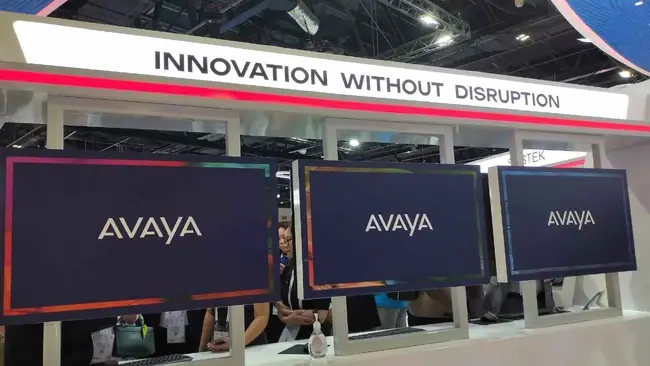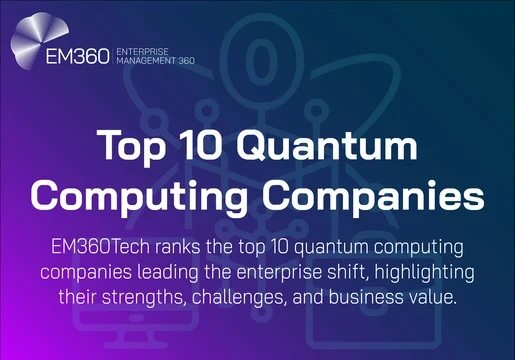I was part of a small group of analysts – five – who recently attended the GITEX event in Dubai. Avaya invests heavily in this massive show, which is on the same scale as MWC, but with a primary focus on the Middle East and emerging markets in Africa. This was my first time there, and I can now see why this event is so important for Avaya.
Most of our time was spent with executive briefings and demos at the Avaya stand, and barely had time to explore the hall we were in, so we only saw a small fraction of the show - both for the exhibit space and the programming. Not to mention all the time spent walking through the site to get to Avaya’s spot, along with the taxi rides that seemed to go nowhere in near gridlock road traffic. As such, my takeaways here are mainly about Avaya, but my blog has a handful of photos to give you a flavor of the overall experience.

The Current Avaya Story
CEO Alan Masarek has done a great job bringing Avaya out of their second Chapter 11, and positioning the company for success in a challenging market. He’s continuing to sharpen the focus of their portfolio, along with building out his management team to execute on the vision, which I’ve been calling Act III. Some of the details that he shared with our group were familiar, which I wrote about earlier here in more detail.
Alan and his team were very engaging with us, and I’ll add some color for the key messaging on their current state of play. First was reiterating the cost-cutting they needed to right-size for what their revenues can support, which Alan described as “blunt force trauma”. Better to do it off the top in one shot than death by a thousand cuts – hard choices, but the right ones.
In terms of strategy, the key themes were strongly reinforced, namely “innovation without disruption”, and “choose your journey”. Both reflect how Avaya is well-aligned with the challenges facing their core customer base. Namely, premise-based large enterprises and contact centers who are either not moving to cloud yet, or only in small pieces. They need to modernize their technology – for innovation – but don’t want the risk of disruption if too much change to the status quo. Avaya’s portfolio has been re-tooled to support all possible scenarios, so customers can choose their journey – prem-only, cloud-only, and the many variations of mixed, hybrid deployments.
This does play well to Avaya’s strengths – “we have a swim lane there” as Alan told us. Despite the years-long bleeding that countless competitors are happy to talk about, he maintains they still have the world’s largest customer base, so there certainly remains a customer base they can execute on, and it looks like they’ve been doing just that.
That said, at the end of the day – even for a private company, and arguably even more so – it comes down to the numbers and their ability to grow. Without disclosing 2023 revenues, Avaya has shared that it is planning for a 9% CAGR – compound annual growth rate. Until interest rates spiked up this year, many cloud providers were regularly reporting double-digit growth (but often not posting profits), so this target may seem modest.
In the current climate, however, it’s actually pretty aggressive, especially with cloud momentum still strong. Avaya’s core base will remain prem-centric for some time, so to hit that target, they’ll have to execute really well. Another core message is that “Avaya is back”, and to get a better sense as to why they believe they can execute, you should review their recently-published Avaya Report to Customers.
Building Blocks for Rejuvenation
Another term we heard during the event was “rejuvenation” – and it’s meant to resonate broadly - for the company, for the brand, for customers and for their culture. This is part of having a clear vision, and I feel that Alan has brought that from the beginning. A lot of things need to go right, and that means playing to your strengths, and getting the market to buy into that. Here are three building blocks that stood out for me, will go a long way to achieving this rejuvenation.
1. Dominate the prem market. Being at GITEX provided great first-hand insight for market opportunities outside the West. The US and EU may be the most lucrative markets for tech companies, but there’s a big world beyond that, and in the Middle East, Africa and adjacent Asian markets, the move to cloud has been slower. Avaya was also slow to the cloud, and not surprisingly, most of their attrition has come from the US and EU. These other markets, however, are pretty big too, and Avaya should be able to generate some healthy growth here, and hence their presence at GITEX.
2. Lead with voice. Alan maintains that Avaya’s voice capabilities are “best on the planet”, and even if half-true, it’s a fundamental building block that is easy to overlook, especially for large-scale deployments. This is where having a rich telecom pedigree makes a big difference, and when you have that, adding the newer pieces like APIs, digital channels, video, etc., is – or should be – relatively easy. The converse is also true, as many cloud-native players have learned that voice is harder to do than it looks, and it’s not a simple bolt-on feature. Avaya should be able to play this card to advantage, both in the workplace, where voice is critical for collaboration, as well as in the contact center, where telephony is still the dominant communication channel with customers.
3. Ramp up ability to leverage data. Recognizing your shortcomings is another hallmark of leadership, and Alan rightly noted that data generated from their customers is an “underutilized asset”. With such a large customer base and long history, the raw materials are there to mine all this data, which will be essential to keep up with competitors as AI becomes the driver of everything. Perhaps this is where that telecom pedigree has been a holdback, as their “Bell-heavy culture” is hard-wired to view telephony as voice, not data. They know this has to change, but given how fast AI is moving, time isn’t on their side. On the other hand, it’s still early innings with AI, and with good execution, they can close that gap, but as the Yogi-ism goes, “it gets late early out there”. Time aside, they don’t have the resources to invest in R&D to the scale needed to catch up, so forming the right partnerships for AI will be key. We saw good examples of this at GITEX, namely Journey.ai, Cognigy and Sestek, and we should expect to see more in 2024.
What’s the End Game?
There were many other takeaways from this event, both for Avaya and GITEX, but those will have to wait for another time. As a conclusion, Alan summed up the end game very nicely: “our challenge is to be the solution of the future”. For so long, he noted that Avaya was viewed as the “solution of the past”, and you can read that on many levels. Vision is about the future and where the company needs to go, and Avaya can only hit that 9% CAGR by changing this perception.
Thanks to AI, the future is happening faster than ever before, and for that perception shift to happen, it all comes back to execution. My conclusion from the GITEX experience is that Avaya has a clear vision about all this, and the above rejuvenation building blocks give them more than a fighting chance to become the solution of the future. Finally – speaking about vision – I’ve added a visual element to my analysis, with a selection of my photos from GITEX, which you can view here on my blog.







Comments ( 0 )